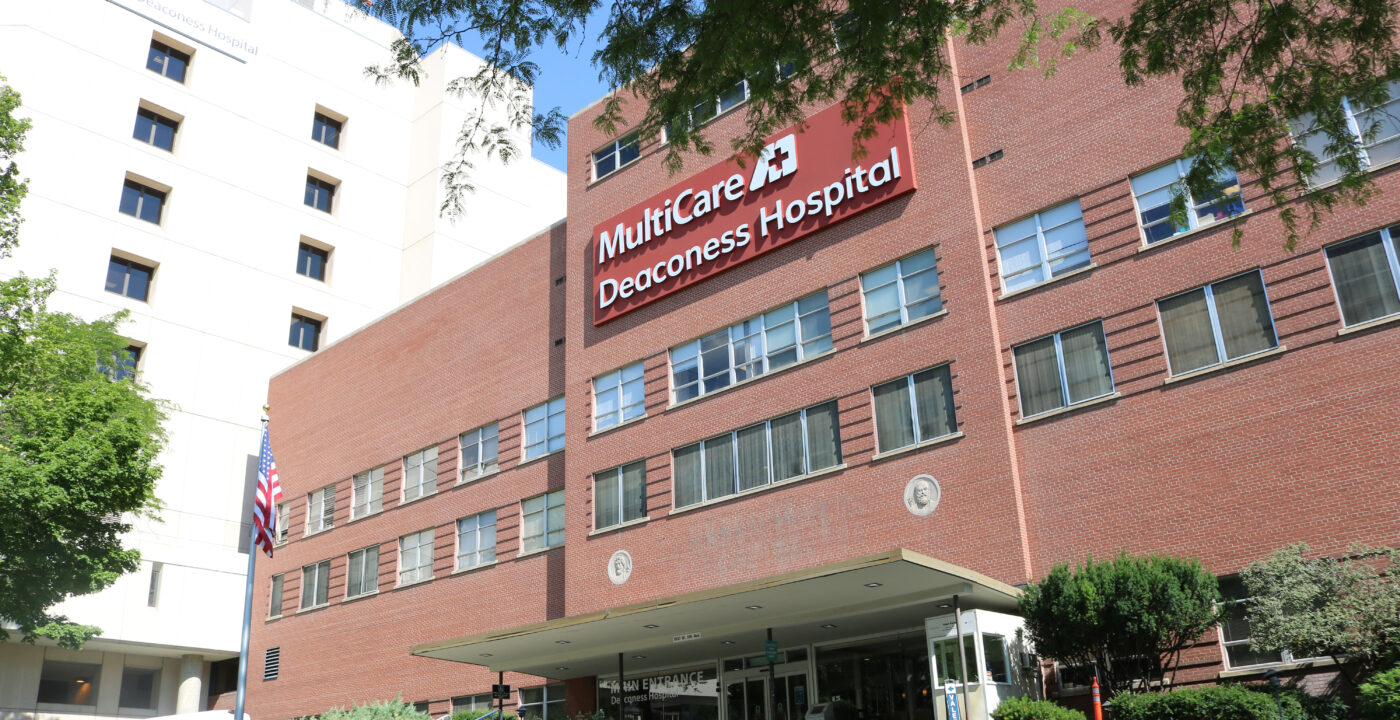Women’s History Month: The early days of Deaconess

It’s Women’s History Month, when we look back at the incredible contributions women have made to our collective history. The contributions of women throughout MultiCare’s history has also been significant. Earlier this month we shared the story of Fannie Paddock Memorial Hospital — what’s now knows as Tacoma General Hospital.
MultiCare Deaconess Hospital in Spokane was also made possible by the vision and hard work of women. And in fact, the is still named after a woman, or rather, women — a deaconess is a female Methodist missionary.
In a story for the centennial of the hospital, Spokesman-Review journalist Jim Kershner wrote,
“The deaconess movement began on the East Coast in the 1880s as a way of ministering to the spiritual and physical needs of the sick and needy. Deaconesses weren’t nurses; they were almost like nuns. In historical pictures, you see them dressed all in black, Bibles clasped grimly under arms, making visits to poor families….”
Originally, the hospital bore a different woman’s name. When it first opened it was know as Maria Beard Home and Hospital. Maria Beard was the mother of Minnie Beard O’Neill who had led efforts to create a Deaconess Board of Directors in January 1892. A few months after the Deaconess were established in the area, she and her husband Franklin donated property for a modest home on Fifth Avenue to care for Spokane’s ill and destitute. At the time, medical care was not the focus.
As told in The Deaconess Story, 1896 – 1996, by Priscilla Gilkey, the Deaconesses were preparing breakfast one morning at their newest location in 1896 when a stranger from British Columbia arrived in pain. The team cleared off the dining table, transforming the kitchen into an operating room and using the wash boiler and kitchen stove to sterilize for an appendectomy performed by Dr. George Libby. He provided a personal nightgown for use of the patient afterward. It’s part of the legend, mentioned in every account of this tale, that the patient never paid his bill.
The Deaconesses knew they needed a real hospital. Gilkey reports that Beard O’Neill prayed that if her husband Franklin could fine a valuable mine, she would tithe enough money to help the Deaconesses build that hospital. In Sandon, British Columbia, Franklin found a mine that he would later sell for $50,000. He and his wife donated $5,000 to build the hospital that would be named after Minnie’s mother.
Mary Beard was there for the dedication of a 20-room, 2 1/2 story building on Fourth Avenue on Oct. 4, 1897. Half the building was a hospital, and half was a home for the elderly. It needed carpeting, and Beard O’Neill offered a dress as collateral for a loan to obtain that carpeting.
By 1898, the hospital was serving 176 patients at a dollar a day. So it had become a pretty big budget operation compared to those early days!
Today, of course, the Methodists have no connection to the hospital, though it still bears the Deaconess name. Even so, as Kerschner put it in the Spokesman-Review, “… the original spirit of Deaconess hovers over this vast modern enterprise. That spirit is dressed all in black, carrying a Bible under an arm, and marveling at what Deaconess has become.”



